Ditapis dengan

IAEA - TECDOC Series No. 1601 : Homogeneous Aqueous Solution Nuclear Reactors…
This publication presents a summary of discussions from a consultants meeting on the merits and challenges associated with the operation of aqueous homogeneous reactors (AHRs) for the production of the isotope technetium-99m (99mTc) and includes the technical presentations given by the participants during the meeting. Currently, 80% of all radiopharmaceutical procedures employ 99mTc, a product …
- Edisi
- -
- ISBN/ISSN
- 978–92–0–109708–8 / 1011–4289
- Deskripsi Fisik
- 93 p
- Judul Seri
- -
- No. Panggil
- -
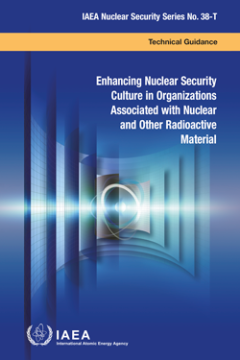
Enhancing Nuclear Security Culture in Organizations Associated with Nuclear a…
Nuclear security culture is an important component of an effective nuclear security regime, as it serves as a tool to improve the performance of the human component at nuclear facilities and organizations to counter both insider and outsider threats. Security culture connotes not only the technical proficiency of the people but also their awareness of security risks and motivation to follow est…
- Edisi
- -
- ISBN/ISSN
- 978-92-0-105319-0
- Deskripsi Fisik
- 206 hal
- Judul Seri
- -
- No. Panggil
- -
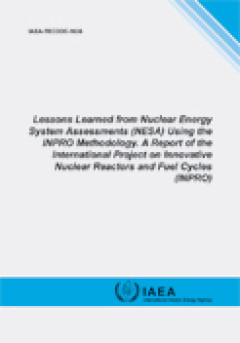
Lessons Learned from Nuclear Energy System Assessments (NESA) Using the INPRO…
INPRO is an international project to help ensure that nuclear energy is available to contribute in a sustainable manner to meeting the energy needs of the 21st century. This publication is part of Phase 2 of INPRO and provides a summary of seven nuclear energy assessment (NESA) studies that document the application of the INPRO methodology in national nuclear power programmes, in specific desig…
- Edisi
- -
- ISBN/ISSN
- 978-92-0-112509-5 / 1011-4289
- Deskripsi Fisik
- 165 p
- Judul Seri
- -
- No. Panggil
- -
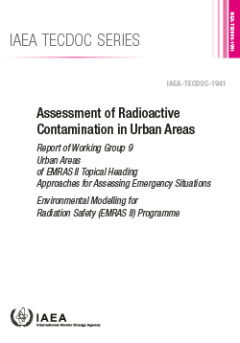
Assessment of Radioactive Contamination in Urban Areas - IAEA TECDOC No. 1941
Radiological environmental impact assessment models are important tools to ensure protection of the public and the environment. The IAEA has an ongoing programme to improve capabilities in this area by model testing and comparison, reaching consensus on modelling philosophies, approaches and parameter values. This publication describes and summarizes the findings of Working Group 9 carried out …
- Edisi
- -
- ISBN/ISSN
- 978-92-0-134221-8
- Deskripsi Fisik
- -
- Judul Seri
- -
- No. Panggil
- -
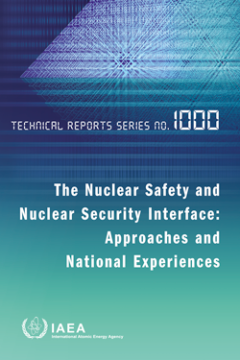
The Nuclear Safety and Nuclear Security Interface: Approaches and National Ex…
This publication was developed from the exchange of information, experiences and practices by participating Member States at the IAEA Technical Meeting on the Safety and Security Interface — Approaches and National Experiences, held in Vienna in 2018. It aims to provide a better understanding of the important elements of the interface between nuclear safety and nuclear security for facilities…
- Edisi
- -
- ISBN/ISSN
- 978-92-0-121920-6
- Deskripsi Fisik
- 59 Hal
- Judul Seri
- -
- No. Panggil
- -
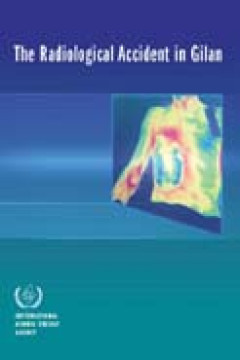
The Radiological In Gilania
On 24 July 1996 a serious accident occurred at the Gilan combined cycle fossil fuel power plant in the Islamic Republic of Iran. A worker unknowingly put an unshielded 185 GBq iridium-192 source used for industrial radiography in his pocket. As a result of exposure to the iridium source, the worker suffered from severe haematopoietic syndrome (bone marrow depression) and an unusually extended l…
- Edisi
- -
- ISBN/ISSN
- 92-0-110502-9
- Deskripsi Fisik
- 46 pages
- Judul Seri
- -
- No. Panggil
- -
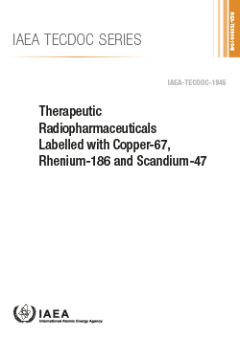
Therapeutic Radiopharmaceuticals Labelled with Copper-67, Rhenium-186 and Sca…
Theranostic radiopharmaceuticals have shown tremendous capabilities in the last decade in the treatment and diagnosis of human diseases via nuclear medicine procedures. In particular, the use of radiometals has experienced a great increase as a result of the development of relevant production technologies. This publication presents the outcome of an IAEA coordinated research project (CRP) focus…
- Edisi
- -
- ISBN/ISSN
- 978-92-0-135021-3
- Deskripsi Fisik
- 56 hal, 2.05MB
- Judul Seri
- -
- No. Panggil
- -

Safety Series No.50-S6-D2 (Rev. 1) SAFETY GUIDES. Fire Protection in Nuclear …
The hydrosphere represents an important pathway by which radioactive materials caft be dispersed from a nuclear power plant into the environment and hence to man. The dispersion in surface water is discussed in this Guide while the question of dispersion in groundwater is presented in the Safety Guide on Nuclear Power Plant Siting: Hydrogeologic Aspects (IAEA Safety Series No.50-SG-S7).
- Edisi
- -
- ISBN/ISSN
- 9 2-0-123285-3
- Deskripsi Fisik
- 132 pages
- Judul Seri
- -
- No. Panggil
- -
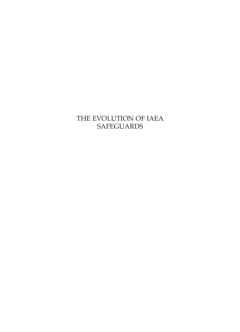
The Evolution of IAEA Safeguard International Nuclear Verification Series No.2.
This is the second in a new series of booklets dealing with IAEA safeguards. The booklets are intended for persons professionally interested in the subject, such as government officials having responsibilities relating to nonproliferation or to the management of nuclear facilities, and for the practitioners of safeguards — the international and national officials charged with implementing IAE…
- Edisi
- -
- ISBN/ISSN
- -
- Deskripsi Fisik
- -
- Judul Seri
- -
- No. Panggil
- -
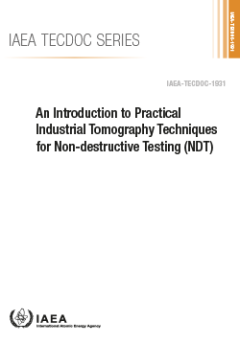
An Introduction to Practical Industrial Tomography Techniques for Non-destruc…
Industrial computed tomography for advanced industrial non-destructive evaluation is a complex technological area, encompassing nuclear radiation detectors, mechanical engineering, computational mathematics and radiation physics. Additionally, the cost of applying this technology may be prohibitive. This guidebook provides an introduction to gamma computed tomography for non-destructive evaluat…
- Edisi
- -
- ISBN/ISSN
- 978-92-0-120920-7
- Deskripsi Fisik
- 88 Hal, 3.67 MB
- Judul Seri
- -
- No. Panggil
- -
 Karya Umum
Karya Umum  Filsafat
Filsafat  Agama
Agama  Ilmu-ilmu Sosial
Ilmu-ilmu Sosial  Bahasa
Bahasa  Ilmu-ilmu Murni
Ilmu-ilmu Murni 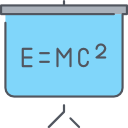 Ilmu-ilmu Terapan
Ilmu-ilmu Terapan  Kesenian, Hiburan, dan Olahraga
Kesenian, Hiburan, dan Olahraga  Kesusastraan
Kesusastraan  Geografi dan Sejarah
Geografi dan Sejarah